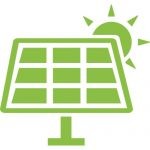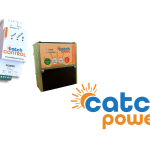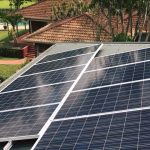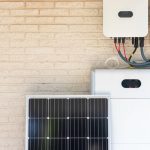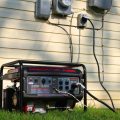Queenslanders work hard to earn a living, to pay for our expenses for food, clothing, necessities, and we also pay for luxury or for comfort. With ever increasing electricity costs and inflation, our earnings are being stretched and budgets are tightening. What many people don’t know is that there are simple ways for us to save money on electricity bills.
So in order for you to avoid struggling with your electricity bill, there are behaviours that you can change to reduce it. We cover 12 ways to do just that. But first…
What is the average electricity bill in Brisbane?
As of April 2024, the average monthly electricity bill for a typical household in Brisbane and South-East Queensland is about $164, which translates to approximately $1,969 per year. This figure can vary based on factors like household size, usage of energy-efficient appliances, and seasonal changes in energy consumption.
Could there be a mistake with the meter reading?
Yes, mistakes with meter readings can occur, and there are several reasons why this might happen. Sometimes, utility companies use estimated readings based on past usage rather than actual readings. If the estimate is off, it can result in an inaccurate bill. Sometimes the increase in the bill is due to new appliances or increased usage that has gone unnoticed.
Check the meter yourself. Compare the reading on your latest bill with the actual reading on your meter. If you find a discrepancy, contact your utility provider and request a meter reading review or a re-read.
12 Ways To Reduce Your Electricity Bill
1. Unplug your appliances even with standby mode
If your appliances are not in use, just unplug them. Since, even if you are not using them, it still uses energy. We all do it, but leaving appliances in the stand-by mode it’s actually wasting electricity and costing us more money. Wherever possible turn the appliance off at the plug when not in use to maximise energy conservation. Or if you prefer, use a power strip for all of your appliances and turn that off, when you go to bed. This is one of the simplest things you can do to save money on your power bill.
2. Make sure your appliances are in the right position
The placement of your kitchen appliances is one way in which you can keep your energy bills down, and yet it’s a factor that is often overlooked. Never place your refrigerator directly next to your dishwasher because as the dishwasher gets hot it will cause the fridge to kick in to maintain its low temperature, thus using more energy.
In addition, be sure to leave a gap of at least 4 inches behind your refrigerator so that the air can circulate properly around it. Failing to do this can cause your fridge to use more energy.
3. Purchase energy-efficient appliances
We understand that you may be reluctant to part with an old appliance that is still functioning, after all, it’s yet another expense. However, most old appliances simply don’t function as well as new ones and use more energy, so by replacing them, you can save yourself money in the long run and lower electricity bills.
Your fridge is one of the appliances that use the most amount of energy in the home so select a new one with the highest star rating. Believe it or not, every star represents a 23% saving on running costs.
Also, be sure to choose the right size for your needs. If your fridge is usually only two thirds full then it’s probably too large for you. In addition look for brands that offer door alarms, adjustable defrost, and inverter technology.
4. Run appliances during off-peak hours
Use appliances like dishwashers and washing machines during off-peak hours when electricity rates are lower. Electricity providers often charge lower rates during off-peak hours, typically late at night or early in the morning, when demand is lower. These rates can be substantially lower than peak-hour rates in the order of 30-50%.
Use programmable timers or smart plugs to run energy-intensive appliances. Many modern appliances also have delay start features that allow you to set them to operate at specific times.
5. If the food is hot, don’t put it on the refrigerator immediately
Everyone loves food and sometimes, we store excess food so that we can still eat it tomorrow or whenever. If you need to store newly cooked food, make sure it’s not hot or cooled enough to save energy since the refrigerator will need to put more work into it to cool the food.
6. Lower the temperature of your hot water system
Lowering the temperature on your hot water system can lead to significant energy savings. Set your water heater to 60°C to maintain efficiency and safety. For most households, this is sufficient for daily needs and can prevent scalding. Combine this with other energy-saving practices, like using an energy-efficient showerhead, to maintain comfort without excessive energy use. This small change can add up to noticeable savings on your electricity bill over time.
7. Use your dishwasher wisely
Another easy way to conserve energy in the kitchen is to be more mindful of the way you use your dishwasher. Only run your dishwasher when it’s full. This maximizes the energy and water used per load, making each cycle more efficient. Running half-empty loads wastes energy and water, which increases your utility bills.
Always opt for the economy or energy-saving setting. This setting uses less water and energy by running a shorter wash cycle at a lower temperature, which is usually sufficient for cleaning most dishes.
8. Adjust the temperature of your air conditioning unit
Changing or lowering the thermostat of your air conditioner also helps. Air conditioners exert a lot of energy if you want your room to be cooler. The lower the temperature, the more energy it needs, meaning more money on the bill. So adjust it a little bit, just have the right thermostat to cool enough the room.
9. Use ceiling fans year round
Ceiling fans can help circulate air and reduce the need for air conditioning in the summer and heating in the winter. Ceiling fans circulate air within a room, creating a wind-chill effect that makes you feel cooler. This allows you to set your thermostat higher in the summer without sacrificing comfort. In the winter, reversing the fan direction pushes warm air that has risen to the ceiling back down into the living space.
Ceiling fans use significantly less electricity than air conditioning units. A typical ceiling fan uses about 15-90 watts, while an air conditioner can use up to 3,500 watts. So installing ceiling fans can make you more comfortable while using less energy.
10. Use solar energy
Consider installing solar panels to generate your own electricity, which can significantly reduce your electricity bill. Excess energy can be stored in batteries or fed back into the grid, often earning you credits or payments from your utility company.
If you find that your electricity bill is high with solar panels, get a solar inspection to learn why and consider installing a solar optimiser.
11. Seal leaks
Ensure your home is well-insulated and seal any leaks around windows and doors to maintain temperature and reduce the need for heating and cooling. Common places for leaks include windows, doors, electrical outlets, and attic hatches. Use a draft detector or hold a lit candle near potential leak sites to identify drafts.
Proper sealing and insulation can reduce heating and cooling costs by up to 20%. It also improves comfort by eliminating drafts and maintaining consistent indoor temperatures.
12. Only use LED bulbs
Replace incandescent bulbs with LED light bulbs, which use less energy and have a longer lifespan. LED lighting installations use about 75% less energy than incandescent bulbs and last 25 times longer. This makes them a cost-effective choice for both energy savings and reduced replacement costs. LEDs are available in a range of colour temperatures and brightness levels, making them suitable for various applications from ambient to task lighting. They also provide instant light without warm-up time and are available in dimmable models.
Take action and start saving today!
Follow these tips where they apply and you should see lower electricity bills. Make it a habit to save you money. Meanwhile, if there’s any way we can help you with electrical problems in your home, then please don’t hesitate to contact Static Electrics for Brisbane electricians and Sunshine Coast electrical services.


